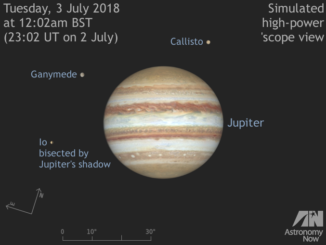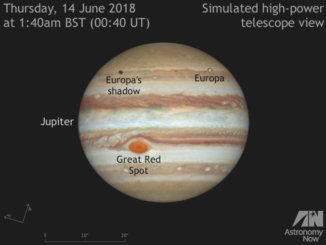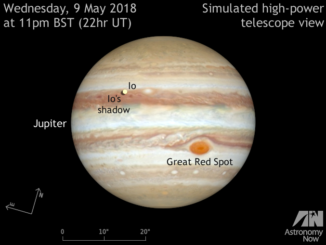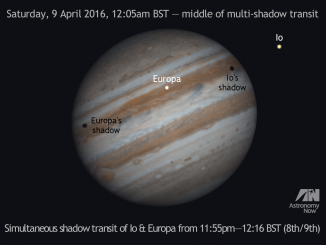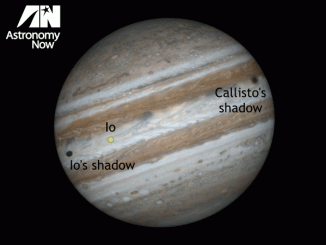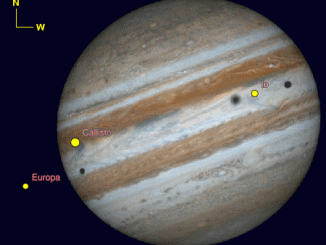
Further Jupiter events for UK observers in July 2019
July opens with Jupiter three weeks after opposition, but the largest planet is still putting on a fine show as an unmistakable magnitude -2.6 object low in the south before midnight in the constellation of Ophiuchus (the Serpent Bearer). With ongoing developments in the Jupiter’s Great Red Spot and plenty of phenomena occurring with the planet’s large Galilean moons, here’s our Jovian observing guide for July 2019.

